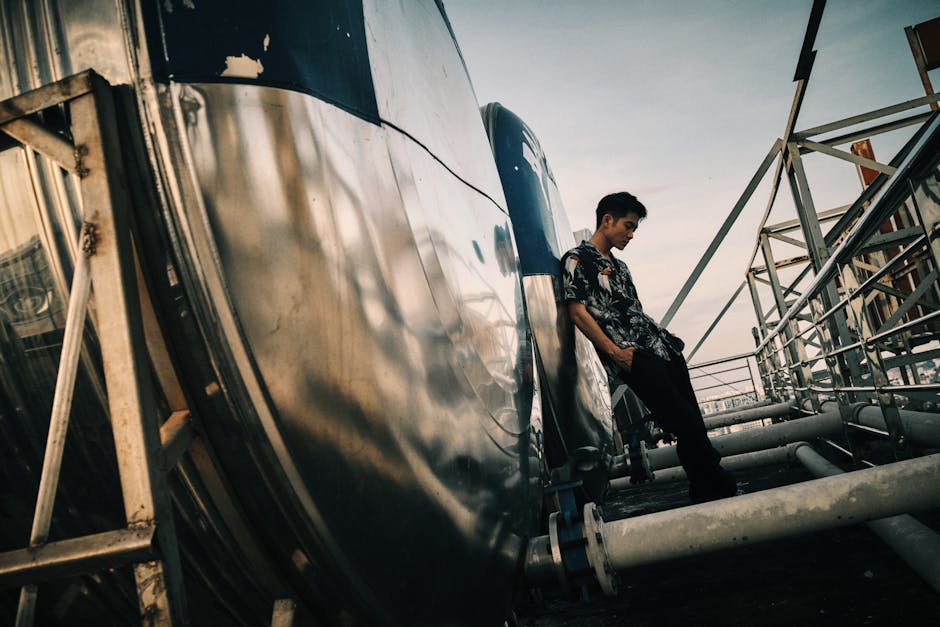How Fast Fashion Has Changed The Fashion Industry
In recent years, the fashion industry has undergone a significant transformation, bringing forth the era of fast fashion. As the name suggests, fast fashion refers to the rapid production and distribution of trendy, affordable clothing inspired by the latest runway styles .
This new business model has not only changed the way we consume and perceive fashion, but also its impact on the environment and the lives of those involved in the production process.
In this blog post, we will shed light on the evolution of fashion, delve into the driving forces behind this revolutionary shift, and explore both the positive and negative consequences of fast fashion on the industry, the environment, and society at large.
Stay tuned to discover how fast fashion has irreversibly changed the fashion landscape and what it means for the future of style.
Understanding Fast Fashion: Definition and Characteristics

Fast fashion, as the name suggests, refers to the rapid production and sale of trendy, affordable clothing designed to cater to ever-changing consumer tastes. But what exactly sets fast fashion apart from traditional fashion?
First and foremost, its business model emphasizes speed and efficiency. Collections are frequently updated, with new designs hitting the shelves as often as weekly. This accelerated pace has been enabled by revolutionary advancements in technology and manufacturing, which have significantly reduced production times .
One of the key characteristics of fast fashion is affordability. By using cost-effective materials and outsourcing production work to countries with lower labor costs, brands can offer trend-driven styles at a fraction of the cost of high-end fashion labels. This attractive pricing has led to an increase in consumption, as consumers can now easily buy into the latest trends without breaking the bank.
Lastly, fast fashion is heavily influenced by popular culture and copies styles seen on runways, celebrities, and social media, bringing the latest designs to the masses with astonishing speed.
How Fast Fashion Disrupted the Traditional Fashion Calendar

Fast fashion has significantly disrupted the traditional fashion calendar, making trends more fluid and ephemeral. Gone are the days of yearly or seasonal cycles that dictate fashion trends. Instead, fast fashion brands have adopted an accelerated and flexible timeline, typically producing new designs every few weeks.
This constant churn of new styles has not only impacted the way consumers interact with fashion, but also how designers and manufacturers respond to demand. Quickly capitalizing on emerging trends allows these brands to stay relevant among consumers constantly seeking novel , trendy items at affordable prices.
However, this upheaval comes with a price - increased pressure on designers and supply chains, shortened lifespans of clothing, and potentially severe environmental consequences . It's clear that fast fashion has completely transformed the fashion landscape, but the long-term ramifications of these changes are still uncertain.
Emergence of New Retail Models: Online Shopping and Brick-and-Mortar Stores

The rise of fast fashion has significantly impacted consumer behavior , leading to the emergence of new retail models to accommodate these rapid changes. One of the most prominent shifts has been the increase in popularity of online shopping. E-commerce platforms have made it easier for customers to access a wide range of products, delivering the latest trends to their doorstep with just a few clicks.
Moreover, online shopping enables retailers to collect valuable customer data , allowing them to better understand consumer preferences and tailor their offerings accordingly.
On the other hand, brick-and-mortar stores have also had to adapt, diversifying their product offerings and providing a more immersive shopping experience to compete with their digital counterparts. Many have incorporated pop-up shops or limited-time promotional events to draw in customers and capitalize on the immediacy of fast fashion, creating a sense of urgency for shoppers to make a purchase.
As fast fashion continues to evolve, retailers worldwide are finding new ways to keep pace, adopting innovative strategies that cater to the ever-changing desires of their consumers.
Fast Fashion and Consumer Behavior: Affordable Trends

Fast fashion has significantly impacted consumer behavior by offering affordable and quickly changing trends. These reasonably priced items entice customers to purchase more frequently and stay up-to-date with the latest fashion styles.
Nowadays, consumers crave instant gratification and have a strong desire to be part of the current fashion scene. As a result, fast fashion brands have seen a surge in demand as they can quickly produce items and adapt to emerging trends.
This behavior has driven the fashion industry to prioritize speed and cost over quality and sustainability. Brands now focus on producing vast quantities of garments in record time, further fueling the fast-fashion cycle.
However, this consumption pattern has raised questions about its long-term effects on the environment and the ethical implications of cheap labor. In response, many consumers are now reevaluating their choices and considering more sustainable alternatives.
Globalization and the Role of Developing Countries in Fast Fashion Production

Globalization has played a significant role in the rise of fast fashion, allowing brands to produce garments quickly and inexpensively. A major contributor to this has been the shift of production to developing countries.
With lower labor costs and more lenient regulations, countries such as Bangladesh, Vietnam, and Cambodia have become hubs for mass-producing garments. This not only provides an economic boost for these nations, but also allows fast fashion brands to maintain low prices and rapid turnaround times.
However, this outsourcing of production also raises ethical concerns . The low-wage workers in these developing countries often toil in unsafe conditions, as evidenced by the tragic Rana Plaza factory collapse in 2013.
Moreover, the environmental impacts of fast fashion production are significant, with high water and energy consumption being key contributors to pollution. The industry must analyze the true cost of these practices in order to adapt and evolve, taking into account both economic benefits and ethical responsibilities.
Environmental Impact: The Dark Side of Fast Fashion

Fast fashion has undeniably revolutionized the fashion industry, making trendy clothes more accessible and affordable for the masses. However, this rapid turnover of styles comes with a price: a significant environmental impact that's worth considering.
The fashion industry is now one of the largest polluters in the world, primarily due to fast fashion practices. The constant production of new clothing items generates enormous waste and pollution, in addition to consuming vast amounts of water and energy.
Furthermore, the quick disposal of clothing items contributes to overflowing landfills and the release of hazardous chemicals into the environment. As clothing breaks down over time, it releases microplastics into the ocean, affecting marine life and, ultimately, the food chain.
In conclusion, the dark side of fast fashion's environmental footprint cannot be ignored. As consumers, it's crucial to recognize the consequences of our purchasing habits and move towards more sustainable practices.
Labor Practices: The Human Cost of Fast Fashion

Fast fashion has drastically transformed the fashion industry in recent years. One major consequence of this shift is the impact on labor practices and the human cost associated with it.
With brands focusing on rapid production and low prices, workers in the industry often face harsh working conditions . Long hours, low pay, and lack of job security have become common issues in countries that heavily rely on garment production.
Moreover, fast fashion brands seek lower production costs , often outsourcing manufacturing to countries where labor is inexpensive. This reduces the visibility of the supply chain, making it difficult to regulate or ensure ethical labor practices .
Tragic accidents, such as the Rana Plaza collapse in Bangladesh in 2013, are a stark reminder of the inadequate safeguards in place to protect the workers in this industry. As consumers, it is crucial to be aware of the human impact behind the latest trends and support brands committed to ethical labor practices.
The Response from the Fashion Industry: The Rise of Sustainable and Ethical Fashion

Photo by Anete Lusina on Pexels
Fast fashion has undoubtedly reshaped the fashion industry, prioritizing trends and low costs over quality and longevity. In response, an increasing number of brands have been adapting their business models to focus on sustainability and ethical production. This shift emphasizes the importance of eco-friendly materials, fair labor practices , and reducing waste within the supply chain.
As a result, various fashion brands are now offering transparency in their production processes while also adopting innovative technologies to limit their environmental impact. The rise of sustainable and ethical fashion has also led to the emergence of circular fashion, which encourages a closed- loop system within the industry by promoting reuse, recycling, and upcycling of garments.
By pivoting to sustainable practices and keeping ethical considerations at the forefront, the fashion industry is demonstrating a newfound commitment to responsible consumption and positive change in order to mitigate the detrimental effects of fast fashion.

